Understanding the Surface Anatomy of Lips
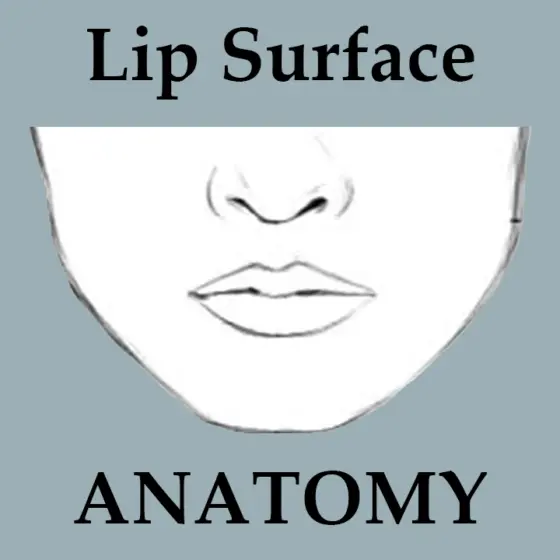
I have had hundreds of lip enhancement consultations over the years and I’d like to talk about the surface anatomy of the lip so that you can better communicate with your doctor about the things that you might want to change, or that you’re not satisfied with.
It’s not just about knowing what you want, or what bothers you. The goal is to communicate what you want to the doctor.
Lip enhancements, whether through implants, lifts, or fillers, are about harmonizing the procedures with your unique features.
When we don’t know the names of things we tend to describe things in general. However, when we know the term, we can more effectively describe the things that we want to change.
So, in an effort to empower you to have the most meaningful discussions during your consultation, let’s talk about the surface anatomy of lips.
The Upper Lip Complex
The upper lip complex refers to the anatomical structures and features of the upper lip region.
Understanding the upper lip complex really helps to achieve desired aesthetic outcomes when you’re looking into cosmetic procedures such as lip lifts and lip augmentations.
Columella
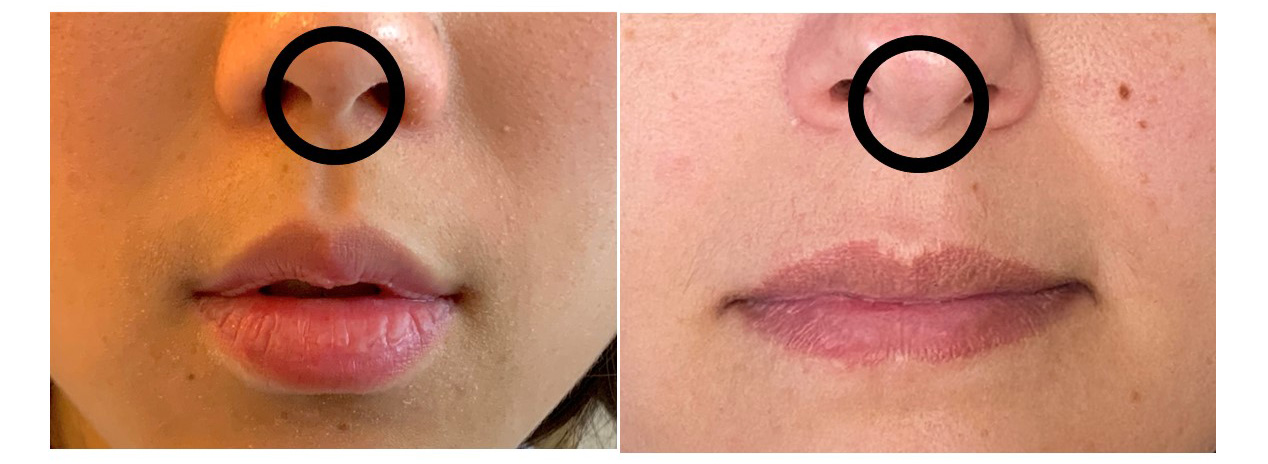
The columella is the little bridge of tissue between the two nostrils. It’s important for your surgeon to keep that columella in the same place and to ensure the surgical closure doesn’t drag that skin down because it can give the impression that the nose is longer. It’s not longer, it’s just that the columella can get dragged down making the total length of the nose seem longer.
Nasal Sill
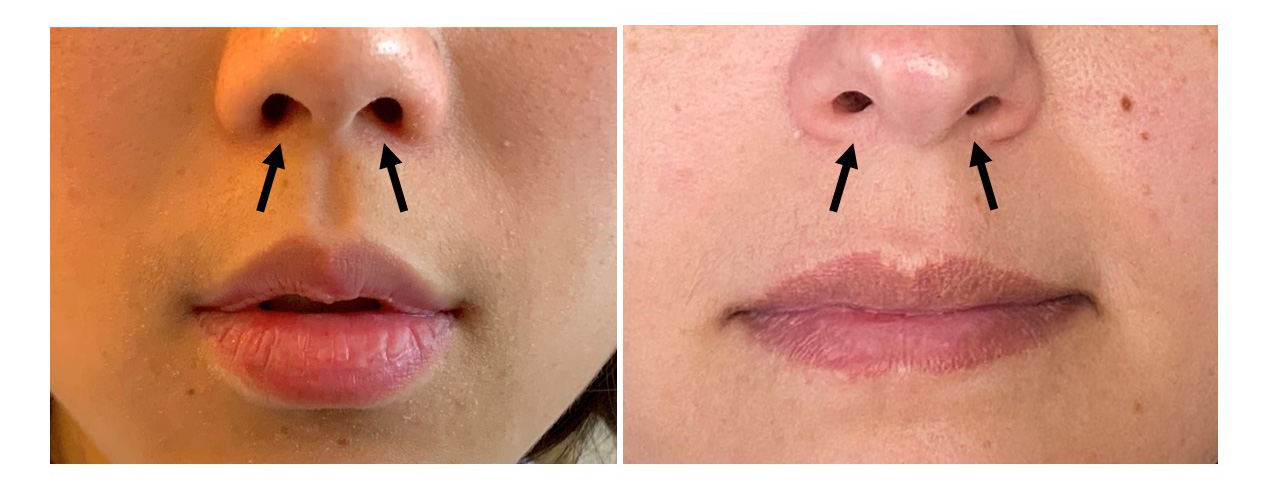
The nasal sill is basically the floor of the nostril. For me, the nasal sill is a surgical landmark that dictates incision placement for a much less noticeable scar. On some patients, the floor of the nostril is much more pronounced while on others it is more indistinct and even non-existent.
It is also possible to have both a more pronounced nasal sill on one side as well as a non-existent one on the other and your surgical planning and incision placement should speak specifically to your case.
Philtrum
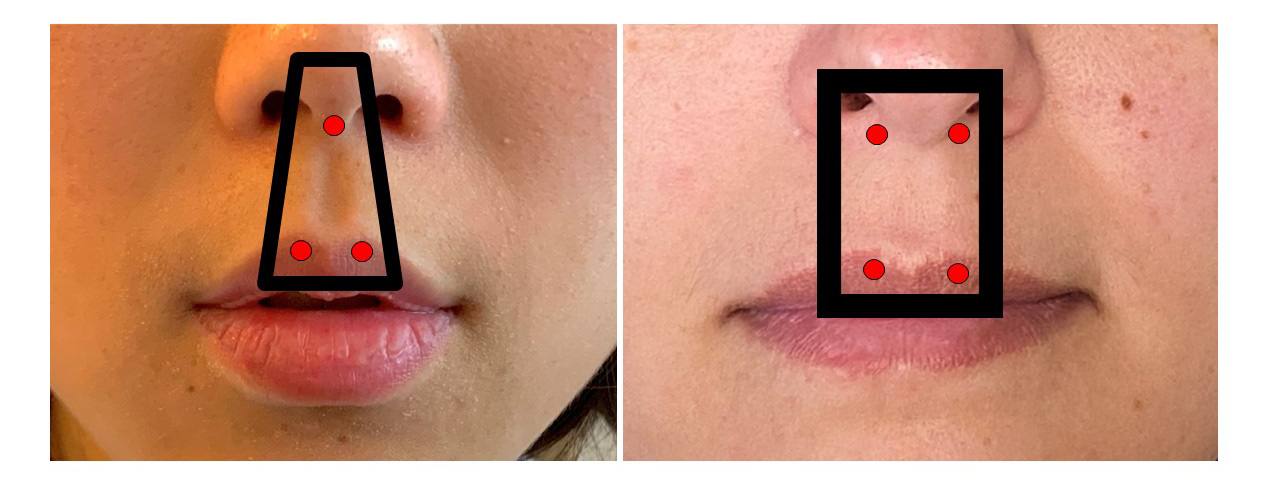
The philtrum is that vertical groove above the upper lip. It usually comes from the edges of the columella down to the apex of the cupid’s bow. Some patients have a more triangular philtrum while others have more of a rectangular philtrum.
Neither is normal or abnormal, it’s just an anatomical variance that’s important to consider when you’re talking about bringing the lip up during a lip lift.
Another thing about the philtrum is that it gives a sense of volume in the center of the lip. I find that sometimes with aging patients the whole philtrum tends to get flattened out. So if you find that describes you, you’ll want your surgeon to try to centralize the lip and give a little bit more contour to the philtrum
Cupid’s Bow
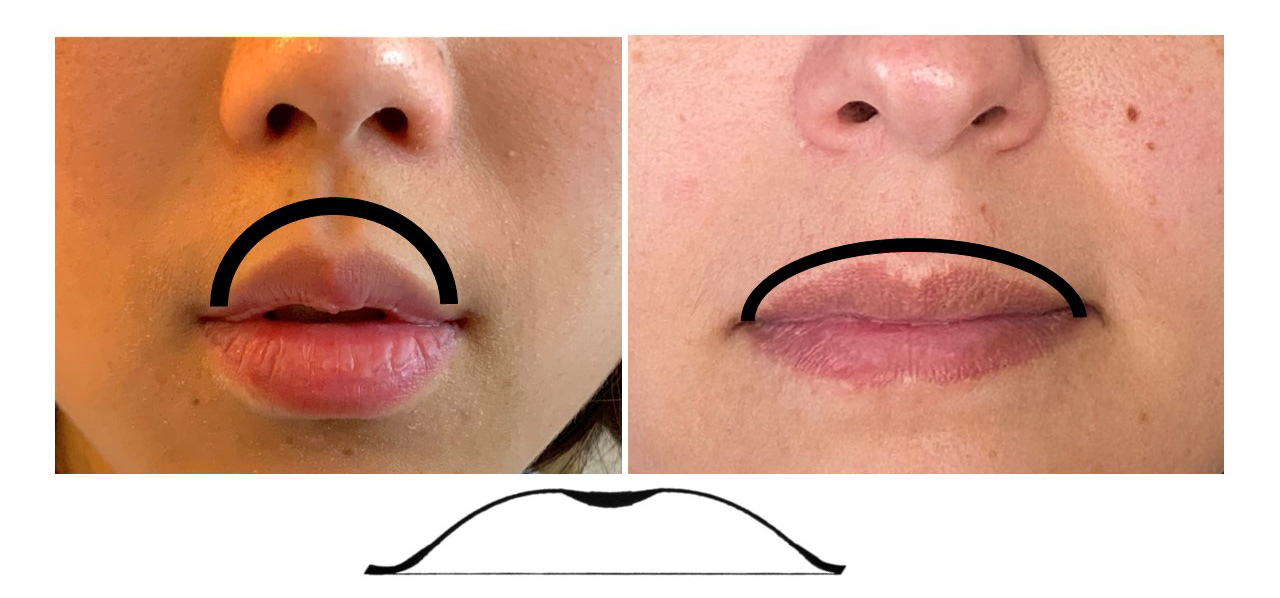
The cupid’s bow refers to the double-curved shape that the upper lip forms. Cupid, the god of love, with his bow and arrow – his bow has that same shape so we often refer to that as your cupid’s bow. The two peaks in the center of your upper lip and the little dip or indentation in the middle.
On some people it’s much more pronounced and acute and on some people it’s more level. You may be looking to adjust the height and/or definition of this feature and surgeon’s can tailor their lip lift plan based on your desired outcome.
Some patients come looking for a very accentuated cupid’s bow and in those cases I would just tend to do a central lip lift. However, on a patient looking for a more evenly distributed cupid’s bow, I would tend to do more of a full upper lip lift to elevate more of the lip.
The Lateral Lip
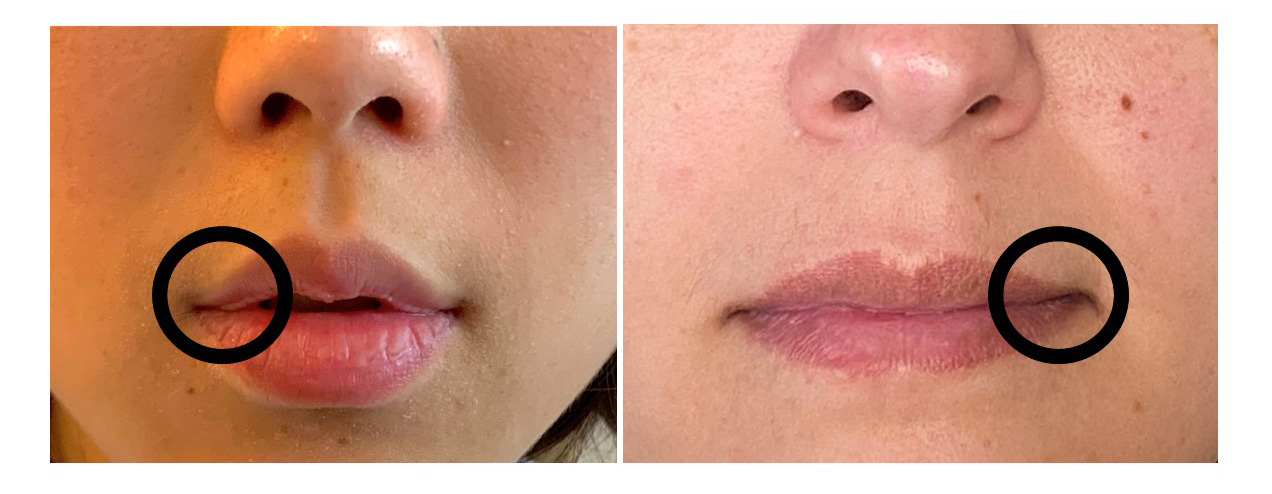
When discussing the lateral lip, we’re referring to the outer edges or sides of the lips. For lift or augmentation purposes, it’s important to not just consider the central portion of your lips, but also consider their entire structure, including the lateral aspects.
It is crucial for achieving balanced and natural-looking results. Refining the lateral lip can help enhance or address symmetry, contour, and proportion.
Corner of the Mouth & the White Roll
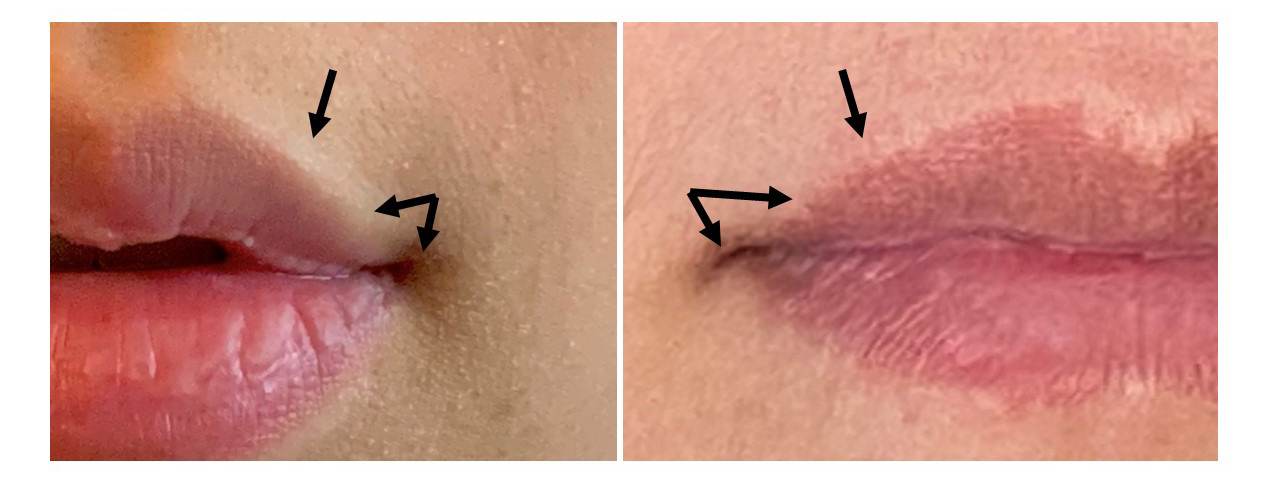
Let’s talk about the corner of the lip, or the corner of the mouth. A normal turn down occurs in a majority of the population. However, there are some patients where the vermillion border will go almost to the side without tapering much at all. That generally gives the impression of a fuller lip all the way around.
These days, with the fuller lip look that everybody likes, that tends to be more of a desired objective; whereas, I think that twenty or thirty years ago, people were wanting more of a defined cupid’s bow.
A traditional lip lift will not result in a lift the corner of the mouth. In order to achieve that, you need to do a separate procedure called a corner lip lift (or lateral lip lift).
The white roll is the little ridge of tissue in between the normal lip (which is flat) and it sort of rolls into the vermillion. The white roll doesn’t tend to go all the way outward and it is very, very subtle. It catches the light and allows you to appreciate the 3-d structure of the lips.
Changes in the perception of the white roll with different lip lift techniques plays a role in your outcome, so be sure to discuss that with your surgeon. For example, a gull-wing lip lift tends to flatten the transition between the skin and the lip and often results in a ‘painted on’ look in comparison.
Vermillion
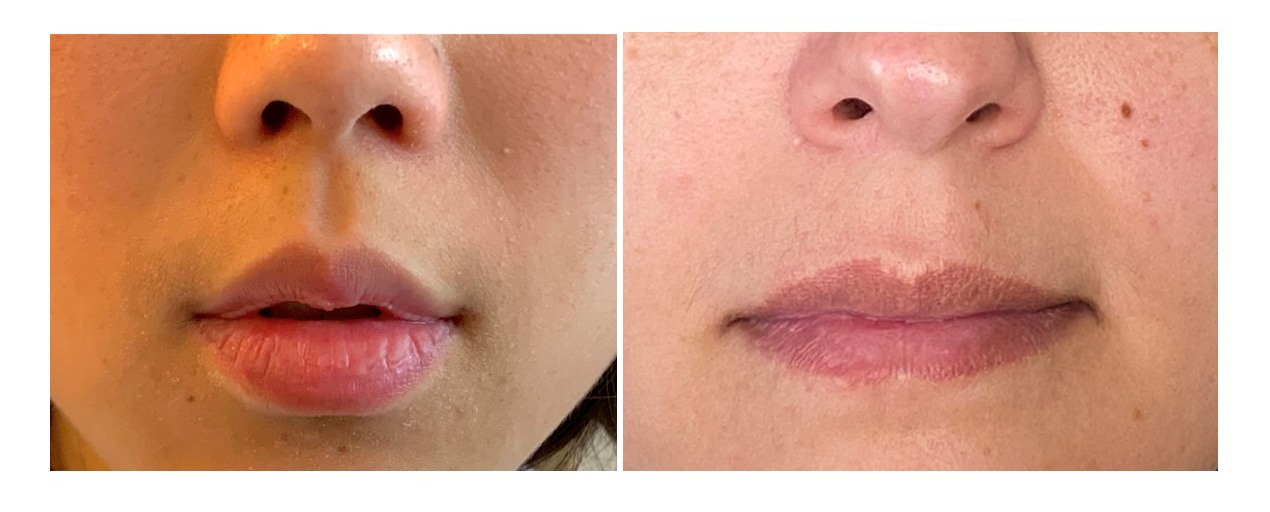
The word vermillion just means “red,” so in reference to lip surface anatomy, we’re talking about the red part of the lip. The vermillion usually has little vertical creases showing, which is totally normal.
Sometimes, when people do lip fillers, they can stretch out all those normal creases. A lip lift, in general, tends to show more vermillion in a more natural way, with the normal creases in it.
The shape of the vermillion and the way that the vermillion shows, really goes together with the cupid’s bow. Some patients have a fleshier vermillion than others, of course. And if your surgeon talks about the vermilion border, that simply refers to the edge between the red part of the lip and the surrounding skin.
In lip enhancement procedures, the vermillion and vermillion border are often key focal points, with the goal of enhancing the volume and shape of the vermillion while maintaining the border definition for natural-looking results.
Asymmetry in Lips
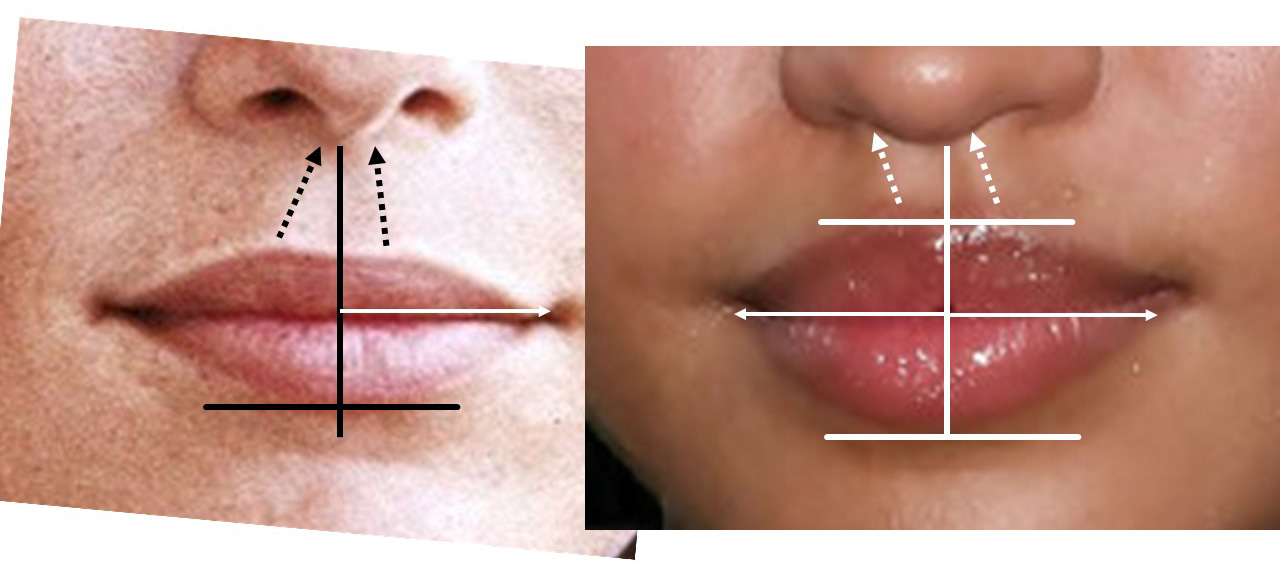
In your pursuit of fuller or more defined lips, remember that true beauty lies in enhancing your natural features.
Use AI to summarize:
All sorts of asymmetry exists in all sorts of lips. Don’t believe me? Take a good look at any model or actress you consider to be beautiful and you’ll find asymmetry. In fact, those asymmetries are often a large part of their appeal!
Asymmetry is a natural aspect of the human body, and it’s important to recognize that absolute symmetry is rare and would actually look a bit strange. In lip lifts, as with almost all plastic surgery procedures, addressing asymmetry is a common desire.
Be sure you and your surgeon approach it with an understanding and appreciation of your unique variations and your desired outcomes.
If you’d like to see me talk about lip surface anatomy, check out this video.
In your pursuit of fuller or more defined lips, remember that true beauty lies in enhancing your natural features.
Wondering if a Lip lift is right for you?
If you feel like your upper lip covers your teeth too much and you’d like your upper lip to look fuller, contact Us to schedule your in-office or virtual consultation. Or just give us a call at 410-494-8100! Note: Virtual consults can also be used to get second opinions.


